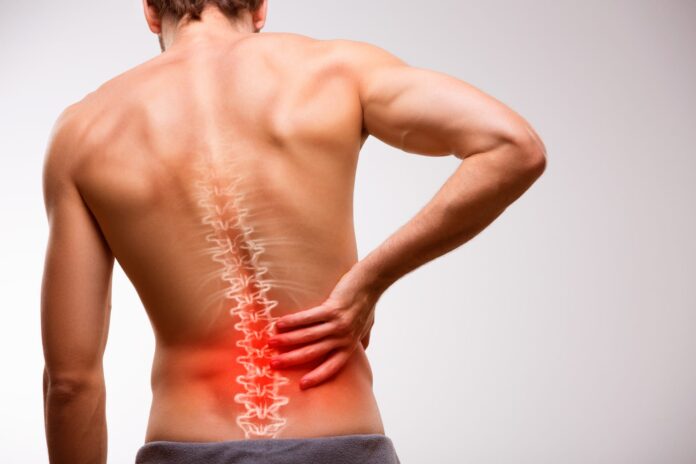A slip disc, also known as a herniated disc or prolapsed disc, occurs when one of the discs in the spine ruptures or bulges out of its normal position. This can put pressure on the surrounding nerves, leading to pain, numbness, or weakness, often in the back, neck, arms, or legs.
Anatomy of the Spine:
The spine is made up of vertebrae (bones) stacked on top of each other. Between these vertebrae are intervertebral discs, which act as cushions, absorbing shock and allowing for flexibility. Each disc has a tough outer layer (annulus fibrosus) and a soft, jelly-like center (nucleus pulposus).
Causes of Slip Disc:
- Aging: Discs naturally lose water content with age, making them less flexible and more prone to tearing or rupturing.
- Injury: Trauma to the spine, such as lifting heavy objects incorrectly, can cause a disc to herniate.
- Repetitive Strain: Continuous strain on the back from activities like heavy lifting or repetitive motions can lead to a herniated disc.
- Obesity: Excess weight puts additional strain on the discs.
- Sedentary Lifestyle: Lack of exercise can weaken the muscles supporting the spine, increasing the risk of disc problems.
Symptoms:
- Back pain: Especially in the lower back or neck.
- Pain radiating down the legs or arms: Commonly known as sciatica when it affects the legs.
- Numbness or tingling: In the affected area, such as the arms, hands, legs, or feet.
- Weakness: In the muscles served by the affected nerves.
Exercises for Relief from Slip Disc:
1. Pelvic Tilt:
- Lie on your back with your knees bent and feet flat on the floor.
- Tighten your abdominal muscles and flatten your lower back against the floor.
- Hold for a few seconds, then relax. Repeat 10-15 times.
2. Cat-Cow Stretch:
- Start on your hands and knees in a tabletop position.
- Inhale and arch your back, dropping your belly towards the floor (Cow position).
- Exhale and round your back towards the ceiling (Cat position).
- Repeat 10-15 times, moving slowly.
3. Child’s Pose:
- Start on your hands and knees, then sit back on your heels while stretching your arms forward on the floor.
- Hold this position for 20-30 seconds, focusing on deep breathing.
4. Hamstring Stretch:
- Lie on your back with one leg bent and the other extended straight.
- Slowly lift the straight leg, holding it with both hands behind the knee or thigh.
- Gently pull it towards you until you feel a stretch in the hamstring. Hold for 20-30 seconds and switch legs.
5. Knee-to-Chest Stretch:
- Lie on your back with your knees bent.
- Bring one knee up to your chest, holding it with both hands.
- Hold for 20-30 seconds and switch legs.
6. Glute Bridges:
- Lie on your back with your knees bent and feet flat on the floor.
- Lift your hips towards the ceiling, squeezing your glutes.
- Hold for a few seconds, then lower back down. Repeat 10-15 times.
7. Wall Sits:
- Stand with your back against a wall and slowly slide down until your knees are bent at a 90-degree angle.
- Hold for 20-30 seconds, then slide back up.
Precautions:
- Avoid high-impact activities: Like running or jumping, as they can worsen symptoms.
- Focus on good posture: Both while standing and sitting.
- Consult a healthcare professional: Before starting any exercise regimen, especially if you’re experiencing significant pain or discomfort.
Consistent, gentle exercise can strengthen the muscles around the spine, improve flexibility, and reduce pain associated with a slip disc.



